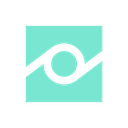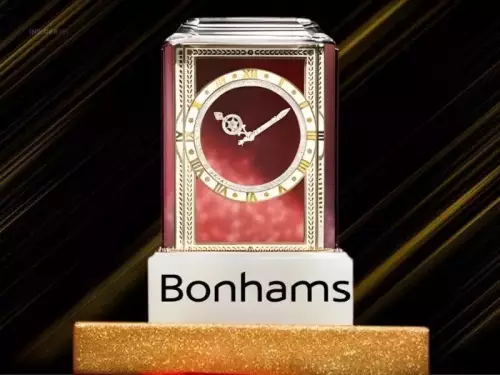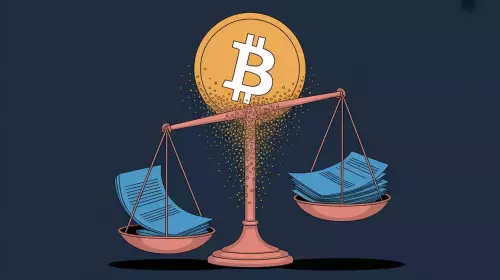 |
|
 |
|
 |
|
 |
|
 |
|
 |
|
 |
|
 |
|
 |
|
 |
|
 |
|
 |
|
 |
|
 |
|
 |
|
암호화폐 뉴스 기사
PlutoChain ($PLUTO) Might Be the Layer-2 Solution Bitcoin Needs to Regain Dominance
2024/12/27 06:00

Ripple (XRP), Solana (SOL), Kaspa (KAS), and Hedera (HBAR) have each made headlines for their unique strengths.
However, even these impressive altcoins face challenges in balancing speed, decentralization, and security. The market is awaiting the next breakthrough technology that doesn’t just iterate—but disrupts.
Enter PlutoChain ($PLUTO).
PlutoChain’s cutting-edge Layer-2 technology might slash settlement times to two seconds, compared to the ten-minute blocks of legacy systems.
With an architecture designed to enhance scalability without sacrificing decentralization or security, PlutoChain just might set the new gold standard for blockchain performance.
Let’s check out the details.
Layer-2 Solutions Could Be the Key to Bitcoin’s Future—And PlutoChain Might Lead the Way
Bitcoin has earned its reputation as the pioneer of cryptocurrencies, thanks to its rock-solid security and reliability.
However, like any groundbreaking technology, it has its set of challenges.
Current Bitcoin transactions often involve substantial fees and extended confirmation times. During periods of high activity, the network experiences congestion, which limits its practical utility.
These limitations have largely confined Bitcoin to serving as “digital gold”—a store of value rather than a practical everyday currency.
PlutoChain ($PLUTO) is working on a solution that could change this narrative. With a Layer-2 network that works with Bitcoin’s main blockchain, PlutoChain may address these fundamental challenges.
PlutoChain‘s Layer-2 approach could process transactions on a secondary network layer, promising to dramatically reduce fees while significantly speeding up transaction times. It could reduce Bitcoin’s transaction confirmation time from 10 minutes to just 2 seconds on their Layer-2 network.
The project is also compatible with the Ethereum Virtual Machine (EVM). This could enable developers who have built applications on Ethereum to transfer their projects to Bitcoin with minimal modifications.
The EVM compatibility may support a wide range of applications, from decentralized finance (DeFi) platforms and NFT marketplaces to advanced AI-powered applications.
During testnet trials, PlutoChain demonstrated its ability to handle more than 43,200 transactions per day—a significant improvement over Bitcoin’s main network capacity.
This performance level could mean that PlutoChain can manage real-world demand without experiencing the slowdowns that affect Bitcoin’s main chain during peak usage.
PlutoChain Brings a Decentralized Governance Structure to Give Control to Early Adopters
The project places early users at the center of decision-making, which could allow adopters to become active participants in shaping the network’s development.
PlutoChain’s governance structure could represent a shift from conventional blockchain management approaches. While many platforms maintain centralized control, PlutoChain might distribute this authority among its user base.
This decentralization could extend to crucial aspects such as technical upgrades, strategic partnerships, and the implementation of new features.
Users could initiate change by submitting proposals through PlutoChain’s Discord channel. These proposals undergo community review and discussion before approval.
This governance framework might serve multiple purposes. It could establish trust between the platform and its users, potentially create shared ownership, and ensure development priorities could reflect actual requirements.
PlutoChain Could Build Trust through Strong Security Measures and Multiple Blockchain Audits
PlutoChain ($PLUTO) might establish user trust through its implementation of comprehensive security protocols and third-party audits. The project prioritizes security at multiple levels to create a reliable network infrastructure.
Several respected security firms, including SolidProof, QuillAudits, and Assure DeFi, have reviewed PlutoChain’s infrastructure and smart contracts.
PlutoChain enhances these external validations through regular internal security practices. The platform conducts detailed code reviews and comprehensive stress testing.
The platform also aligns with international blockchain technology standards, which could add another dimension of credibility.
PlutoChain Could Potentially Bridge Bitcoin’s Technology Gap
While Bitcoin’s status as digital gold remains undisputed, its practical applications have been limited by transaction speeds and restricted functionality.
PlutoChain ($PLUTO) could introduce solutions that might fundamentally reshape Bitcoin’s position in blockchain.
This project could enhance Bitcoin’s capabilities through its Layer-2 infrastructure, potentially enabling rapid transactions and advanced smart contract functionality.
It might transform Bitcoin from primarily a value storage mechanism into a versatile platform that could support decentralized applications (dApps) and modern blockchain implementations.
부인 성명:info@kdj.com
제공된 정보는 거래 조언이 아닙니다. kdj.com은 이 기사에 제공된 정보를 기반으로 이루어진 투자에 대해 어떠한 책임도 지지 않습니다. 암호화폐는 변동성이 매우 높으므로 철저한 조사 후 신중하게 투자하는 것이 좋습니다!
본 웹사이트에 사용된 내용이 귀하의 저작권을 침해한다고 판단되는 경우, 즉시 당사(info@kdj.com)로 연락주시면 즉시 삭제하도록 하겠습니다.
-

-

-

-

-

-

- 연준 총재, FOMC 및 금리: 변화하는 환경 탐색
- 2025-11-07 10:45:56
- 변동하는 경제 지표와 암호화폐 상승 속에서 금리에 대한 연준의 입장을 분석합니다.
-

-

-




















![그래프 가격 예측 [오늘의 GRT 암호화폐 가격 뉴스] 그래프 가격 예측 [오늘의 GRT 암호화폐 가격 뉴스]](/uploads/2025/11/07/cryptocurrencies-news/videos/690d4df44fe69_image_500_375.webp)










































